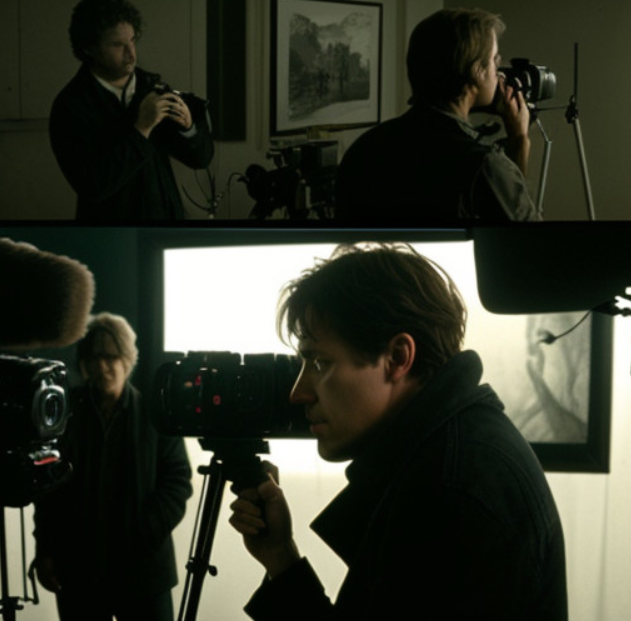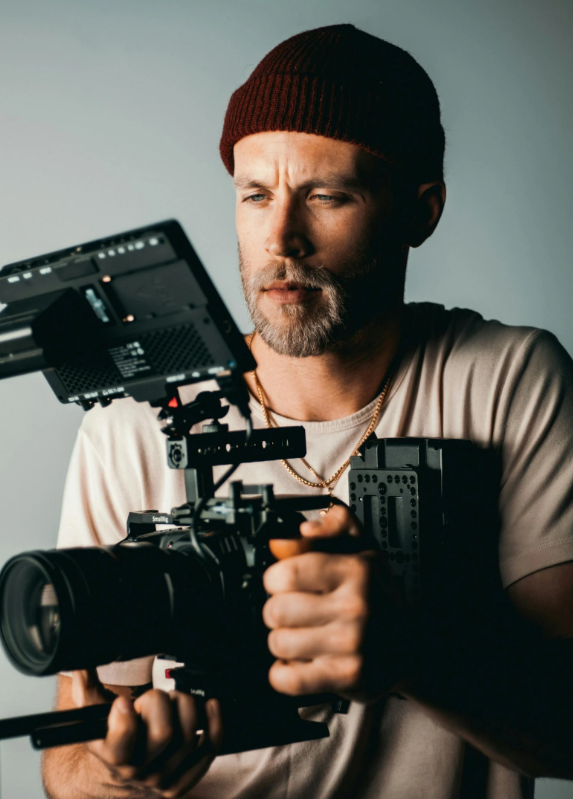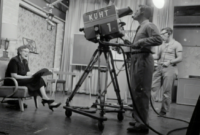
Cinematography is a crucial element of filmmaking that shapes the visual language and emotional impact of a movie. Famous cinematographers, also known as directors of photography (DPs), have made significant contributions to the art of visual storytelling. In this in-depth exploration, we will delve into the lives, works, and techniques of renowned cinematographers who have left an indelible mark on cinematic history.
The Role of Cinematography in Visual Storytelling
Cinematography involves the manipulation of light, composition, camera movement, and color to create the desired mood, atmosphere, and visual narrative of a film. It is a collaborative art that works in harmony with other elements such as direction, production design, and editing to enhance the storytelling experience for the audience.
Elements of Cinematography
- Lighting: The use of light and shadow to create depth, contrast, and emotional tone.
- Composition: The arrangement of visual elements within the frame to guide the viewer's attention and convey meaning.
- Camera Movement: The way the camera moves through space to reveal information, create visual dynamics, or evoke a specific feeling.
- Color: The use of color palette, saturation, and contrast to establish mood, symbolism, or visual themes.
The Pioneers of Cinematography
The early days of cinema saw the emergence of groundbreaking cinematographers who laid the foundation for the art form. These pioneers experimented with new techniques and pushed the boundaries of visual storytelling.
Billy Bitzer (1872-1944)
Billy Bitzer was a pioneer of early cinematography, known for his collaborations with director D.W. Griffith. He was one of the first cinematographers to use techniques such as close-ups, fade-outs, and camera movement to enhance storytelling.
Karl Freund (1890-1969)
Karl Freund was a German cinematographer who made significant contributions to the expressionist movement in cinema. He is best known for his work on the iconic films "Metropolis" (1927) and "Dracula" (1931), where he used innovative lighting techniques to create dramatic visual effects.
Gregg Toland (1904-1948)
Gregg Toland revolutionized cinematography with his deep-focus technique, which allowed for greater depth of field in shots. His groundbreaking work on Orson Welles' "Citizen Kane" (1941) set a new standard for visual storytelling in cinema.
Notable Famous Cinematographers and Their Iconic Works
Throughout film history, several renowned cinematographers have left their mark on the art form through their distinctive styles, techniques, and collaborations with visionary directors.
Emmanuel Lubezki
- Known for his long, uninterrupted takes and natural lighting approach
- Won three consecutive Academy Awards for Best Cinematography for "Gravity" (2013), "Birdman" (2014), and "The Revenant" (2015)
- Frequent collaborator of directors Alfonso Cuarón and Terrence Malick
Roger Deakins
- Known for his versatility and mastery of various cinematography techniques
- Nominated for 15 Academy Awards, winning for "Blade Runner 2049" (2017) and "1917" (2019)
- Frequent collaborator of directors Joel and Ethan Coen, Sam Mendes, and Denis Villeneuve
Vittorio Storaro
- Known for his bold use of color and light to create symbolic and emotional impact
- Won three Academy Awards for Best Cinematography for "Apocalypse Now" (1979), "Reds" (1981), and "The Last Emperor" (1987)
- Frequent collaborator of directors Francis Ford Coppola and Bernardo Bertolucci
The Evolution of Cinematography Techniques

The art of cinematography has evolved alongside technological advancements and artistic movements in filmmaking. From the early days of silent era cinema to the digital age, cinematographers have adapted and innovated to push the boundaries of visual storytelling.
Some notable developments include:
- The transition from black-and-white to color cinematography
- The rise of widescreen formats such as CinemaScope and Panavision
- The emergence of the film noir style, characterized by high-contrast lighting and dramatic shadows
- The New Hollywood era of the 1960s and 1970s, which saw a greater emphasis on realism and location shooting
- The advent of digital cinematography and the increased use of visual effects
Famous cinematographers have been at the forefront of these changes, experimenting with new techniques and technologies to create unique visual experiences.
The Collaborative Art of Cinematography
Cinematography is a collaborative art that relies on the close partnership between the cinematographer and the director. Some of the most iconic films in history have been born out of these collaborations, where the visual style perfectly complements the director's vision.
Notable Cinematographer-Director Collaborations
- Steven Spielberg and Janusz Kamiński: "Schindler's List" (1993), "Saving Private Ryan" (1998), "Lincoln" (2012)
- Martin Scorsese and Robert Richardson: "Raging Bull" (1980), "The Aviator" (2004), "The Irishman" (2019)
- Christopher Nolan and Wally Pfister: "The Dark Knight" trilogy (2005-2012), "Inception" (2010)
- Quentin Tarantino and Robert Richardson: "Kill Bill: Vol. 1" (2003), "Inglourious Basterds" (2009), "Once Upon a Time in Hollywood" (2019)
These collaborations demonstrate the power of a shared creative vision and the importance of the cinematographer-director relationship in shaping the final film.
Analyzing Iconic Cinematography
To truly appreciate the art of cinematography, it is essential to analyze iconic scenes and understand how the visual elements contribute to the storytelling. Let's examine a few famous examples:
"Citizen Kane" (1941) - Cinematography by Gregg Toland
In the opening scene of "Citizen Kane," Toland's deep-focus cinematography allows for a long shot of Kane's mansion, Xanadu, with the camera slowly zooming in to a close-up of a "No Trespassing" sign. This shot establishes the theme of isolation and the enigmatic nature of the film's protagonist.
"Apocalypse Now" (1979) - Cinematography by Vittorio Storaro
The iconic "Ride of the Valkyries" sequence in "Apocalypse Now" features a stunning aerial shot of a fleet of helicopters silhouetted against the orange sky. Storaro's use of color and composition creates a surreal and visually striking moment that captures the chaos and absurdity of war.
"Blade Runner 2049" (2017) - Cinematography by Roger Deakins
In a scene where the protagonist K meets the replicant Joi, Deakins uses a combination of neon lighting and rain effects to create a moody, futuristic atmosphere. The use of shallow depth of field and the interplay of light and shadow add to the emotional intimacy of the scene.
The Future of Cinematography
As technology continues to evolve, the future of cinematography looks bright and full of possibilities. Emerging cinematographers are pushing the boundaries of the craft with innovative techniques and fresh perspectives.
Some notable emerging cinematographers to watch include:
- Bradford Young: Known for his work on "Arrival" (2016) and "Solo: A Star Wars Story" (2018)
- Rachel Morrison: The first woman to be nominated for a Best Cinematography Oscar for "Mudbound" (2017)
- Linus Sandgren: Won an Academy Award for Best Cinematography for "La La Land" (2016)
As virtual production techniques, HDR (High Dynamic Range), and high-resolution formats like 8K become more prevalent, cinematographers will have even more tools at their disposal to create visually stunning and immersive film experiences.
Conclusion
From the pioneers of the silent era to the innovators of the digital age, famous cinematographers have shaped the art of visual storytelling and left an indelible mark on cinematic history. By exploring their lives, works, and techniques, we gain a deeper appreciation for the craft of cinematography and its crucial role in the filmmaking process.
As aspiring filmmakers and cinephiles, we can learn valuable lessons from studying the masters of cinematography. Their unique styles, collaborations, and contributions to the medium serve as inspiration for future generations of visual storytellers.
Additional Resources
For those interested in further exploring the world of cinematography and famous cinematographers, here are some recommended resources:
- American Cinematographer Magazine: The official publication of the American Society of Cinematographers
- "Masters of Light: Conversations with Contemporary Cinematographers" by Dennis Schaefer and Larry Salvato: A collection of interviews with renowned cinematographers
- In Depth Cine on YouTube: A YouTube channel dedicated to in-depth analysis of cinematography techniques and case studies
- CookeOpticsTV on YouTube: Interviews and insights from cinematographers on their craft and techniques
By immersing ourselves in the art and craft of cinematography, we can deepen our appreciation for the power of visual storytelling and the incredible talent behind the camera.
